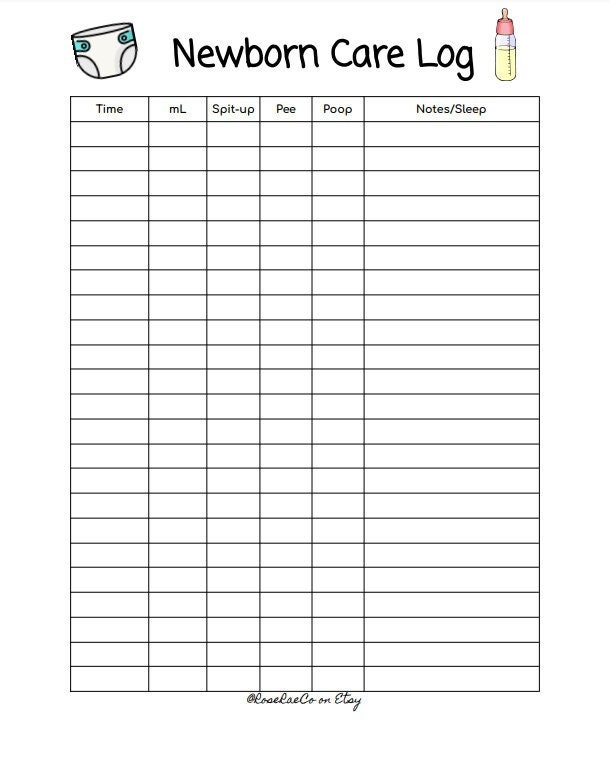
Baby Care Chart: A Comprehensive Guide for New Parents
Introduction
The arrival of a newborn baby brings immense joy and excitement, but it also comes with a myriad of responsibilities. One of the most important aspects of caring for a baby is ensuring their health and well-being. A baby care chart can be an invaluable tool for new parents, providing a structured and organized way to track their baby’s daily routine, feedings, diaper changes, and other essential care tasks.
Benefits of Using a Baby Care Chart
- Improved Organization: A baby care chart helps parents stay organized and on top of their baby’s needs. It provides a clear and concise record of all care activities, making it easy to monitor the baby’s progress and identify any potential issues.
- Consistency: Using a baby care chart promotes consistency in caregiving. Parents can easily follow the established routine, ensuring that the baby receives regular feedings, diaper changes, and other necessary attention.
- Communication: A baby care chart can facilitate communication between parents and other caregivers, such as grandparents or babysitters. It provides a shared reference point, ensuring that everyone is on the same page regarding the baby’s care.
- Peace of Mind: Knowing that the baby’s care is being tracked and documented can give parents peace of mind. It reduces the risk of forgetting or overlooking important tasks, ensuring that the baby’s needs are met promptly.
Creating a Baby Care Chart
Creating a baby care chart is a simple and straightforward process. Here are the steps involved:
- Choose a Format: There are various formats available for baby care charts, including printable templates, apps, and online platforms. Choose a format that best suits your needs and preferences.
- Include Essential Information: The chart should include the following essential information:
- Baby’s name and date of birth
- Feedings (time, amount, type of milk)
- Diaper changes (time, type of diaper)
- Sleep patterns (time, duration)
- Bathing schedule
- Other care tasks (e.g., nail trimming, temperature taking)
- Personalize the Chart: Tailor the chart to your baby’s specific needs and routine. Include any additional information that you find helpful, such as medications, special instructions, or notes about the baby’s behavior.
Using the Baby Care Chart
Once the baby care chart is created, it’s important to use it consistently and effectively. Here are some tips:
- Keep the Chart Accessible: Place the chart in a convenient location where it can be easily accessed by all caregivers.
- Update Regularly: Record all care activities as they occur. This includes feedings, diaper changes, sleep patterns, and any other relevant information.
- Monitor the Baby’s Progress: Regularly review the chart to monitor the baby’s progress and identify any changes or patterns. This can help you detect potential issues early on.
- Communicate with Caregivers: Share the baby care chart with other caregivers to ensure that everyone is following the same routine.
Additional Tips for Baby Care
In addition to using a baby care chart, here are some additional tips for providing optimal care for your newborn:
- Establish a Regular Routine: Babies thrive on routine. Establishing a regular schedule for feedings, sleep, and other care tasks can help them feel secure and comfortable.
- Respond to Cues: Pay attention to your baby’s cues, such as hunger cries, sleepy eyes, or wet diapers. Responding promptly to these cues will help you meet your baby’s needs and prevent them from becoming distressed.
- Provide a Safe and Clean Environment: Ensure that your baby’s environment is safe and clean. This includes keeping the baby’s room at a comfortable temperature, changing diapers frequently, and washing hands before handling the baby.
- Bond with Your Baby: Spend plenty of time bonding with your baby through cuddling, talking, and playing. This helps establish a strong emotional connection and promotes the baby’s development.
- Seek Professional Help When Needed: If you have any concerns about your baby’s health or well-being, don’t hesitate to seek professional help from a pediatrician or other healthcare provider.
Conclusion
A baby care chart is an essential tool for new parents, providing a structured and organized way to track their baby’s daily routine and care tasks. By using a baby care chart, parents can ensure that their baby’s needs are met promptly and consistently, promoting their health, well-being, and development. Remember to personalize the chart to your baby’s specific needs, use it regularly, and seek professional help when necessary. With proper care and attention, you can provide your newborn with the best possible start in life.
